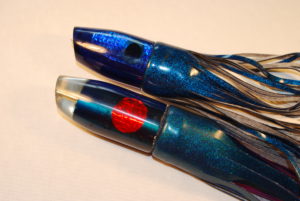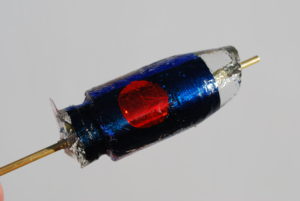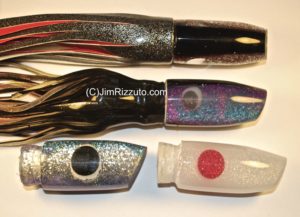
This is part tutorial and part plunger history. Take your pic about what interests you. First the tutorial. These two lures came from the same one-piece mold. The long head is the now famous “plunger” shape. The short head is a short taper lure similar to ones in every lure maker’s catalog. The mold stands on its nose and you fill it up to whatever level meets your needs for a short, medium, or long head. The long head has a tail piece already formed. The short head requires a bit of work on the lathe to cut a tail piece.

Part II of the tutorial. This gooey mess is an important part of lure evolution (said with tongue in cheek along with absolute truth). The mess of uncured resin is just on the surface. It happens because the mix wasn’t right for the temperature and humidity (or you lost count of the drops of catalyst). If you live in a sunny climate, you can leave the lures out in the sun for a few days until the UV rays finish the curing process. Then your job is to remove the sticky surface and do a final polish. Presto! Change-o! Removing the surface down to solid resin creates a new lure with a new size and shape. Use it. It will catch fish, too.

Now for the history part. Like many other Hawaii fishermen, I was making lures of this shape back as far as the late 1960s and early 1970s. Unfortunately, none of my pics from those days clearly show the evolving shape. But I do have a benchmark for the shape shown here. It was August, 1980, the first year of Ken Corday’s TART competition (now in year 26). I was fishing with Ken and Mike Fairfield. I had brought along the mold with the first one of the new shape inside and was planning to do a grand opening to show my new lure. As luck would have it, I hadn’t done a good job with the mold release. I wrestled with the mold for about five minutes before it emerged as Ken kept up a steady stream of pseudo-impatient comments. Joe Yee’s first plunger showed up a few years later, but I want to emphasize that many others were making plungers a decade or so earlier. Indeed, when Scott Crampton saw an image of my plunger, he suspected that I had knocked off his. We compared. Mine was much bigger. (I’ve always wanted to find an opportunity to say that, Scotty.)